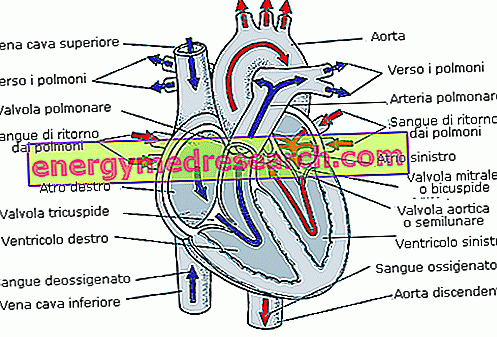Definition of spina bifida
The term "spina bifida" defines a genetic defect of the spine, characterized by the lack of welding of the vertebral arches. Spina bifida is a complex and heterogeneous disease, probably the most common malformation of the peripheral nervous system.
Spina bifida can affect any segment of the spine (cervical, thoracic, lumbar, sacral); despite this, most cases of spina bifida are diagnosed at a low back.
The incomplete closure of the spine triggers serious and irreversible damage to the victim, such as loss of mobility of the lower limbs, inability / difficulty to control the sphincters, urological and neurological complications. Although spina bifida should not involve the mental faculties of the affected child, many sufferers show learning and attention deficits. more or less marked. Still, some children with spina bifida suffer from relationship difficulties, low self-esteem and psychological problems in general. Although the intellectual deficit of children affected by spina bifida is often scientific evidence, the complex mechanism that relates them has not yet been clarified.
Classification and symptoms
To learn more: Symptoms Spina Bifida
The signs and symptoms that characterize spina bifida depend on the severity of the disease. Indeed, several variants have been identified:
- Spina bifida occulta
- Meningocele (meningeal cyst)
- Myelomeningocele (spina bifida opened)
SPINA BIFIDA OCCULTA : this is the lightest variant of the disease. In the spina bifida occulta, the terminal part of some vertebrae is not completely closed; however, the splitting thereof is so light as to prevent the spinal cord from protruding. Near the lesion, the skin may also appear normal or present a tuft of hair (hypertrichosis), a stain similar to an angioma or a slight dimple.
- Signs and Symptoms : spina bifida occulta is generally ASINTOMATIC, since it does not involve the spinal nerves. Some subjects suffering from spina bifida occulta have a slight ASYMMETRY OF THE LEGS and the feet.
Most affected individuals accidentally discover the condition during a normal x-ray of the vertebral column. The spina bifida occulta does not cause long-term sequelae. Until a few years ago, it was believed that subjects with the occult variant of spina bifida were more at risk of back pain. From recent scientific studies, it has instead emerged that there is no proven relationship between low back pain and spina bifida occulta.
MENINGOCELE (meningeal cyst or spina bifida cyistica): it is the rarest variant of spina bifida. In this pathology, the vertebrae develop normally but the meninges are set in the intravertebral space. The nervous system is not damaged, so long-term neuronal damage is rather unlikely. This form of spina bifida is probably caused by teratoma (tumor of embryonic tissues), coccyx tumors and presacral space and Currarino syndrome.
- Signs and symptoms : in the spina bifida cyistica, the signs and symptoms are more evident and marked than in the previous variant.
- Formation of an evident ERNIA OF THE DURAL BAG (containing spinal cord and meninges)
- Sensory dysfunctions, FLACID PARALYSIS
- Alteration of muscle strength, which leads to DEFORMITY OF THE VERTEBRAL COLUMN, contractures of the limbs and dislocations
- Possible formation of HYDROCEPHALUS (accumulation of liquor in the cavities - or ventricles - cerebral)
- SEIZURES
- Changes in cognitive ability
MYELOMENINGOCELE (spina bifida opened) is the most severe form of spina bifida, which also involves the spinal cord. In common parlance, it is customary to speak of spina bifida to mean myelomeningocele. In this pathology, the subject's spinal canal remains open; consequently, the meninges and the spinal cord stretch out, thus giving rise to a protruding pouch at the level of the back. In some cases, this bag is covered with a layer of skin or a membrane; however, the tissues and nerves are often exposed, so the patient is at risk of serious infections (eg meningitis), which can lead to death.
- Signs and symptoms : the symptoms are severe, often responsible for catastrophic complications in the short and long term:
- INTESTINAL AND VESICAL ALTERATIONS: the affected subject loses control of the anal and bladder sphincters
- SEIZURES
- Huge corpus callosum
- Extreme MUSCULAR WEAKNESS and PARALYSIS
- DEFORMITY'? at the level of feet, pelvis, knees
- DIFFICULTY'? OF WALKING
- SCOLIOSIS
Common symptoms and complications
Particular is the propensity of spina bifida patients to develop latex allergy: according to SBAA ( Spina Bifida Association of America ), it appears that 50-73% of spina bifida patients have also developed a marked sensitivity to latex proteins . The explanation is probably quite simple: these patients need constant medical care, so they are often in contact with latex sanitary equipment (latex, in fact, is a natural material very much exploited in the production of health products, such as gloves, masks, tubes etc.).
In a multiform condition like spina bifida, complications cannot be lacking. The patient's clinical picture, already complex in itself, can degenerate to the point of triggering increasingly marked physical defects, neurological complications and difficulties in integration and socialization.
It is believed that 60% of children with spina bifida have serious learning problems (especially in mathematics and reading) even if - as mentioned - the mechanism underlying them is not fully understood.
Some patients with spina bifida also have obvious ocular abnormalities: the movements of the eyes are abnormal and uncontrolled. Pressure sores and skin irritations are also often diagnosed in these patients.
Medical observations show that people with spina bifida have social difficulties. This inability to relate does not change with age: generally, even the adult patient with spina bifida is incapable of having a conversation with peers.
Language skills can also be heavily compromised in the patient with spina bifida.
Watch the video
X Watch the video on youtube



